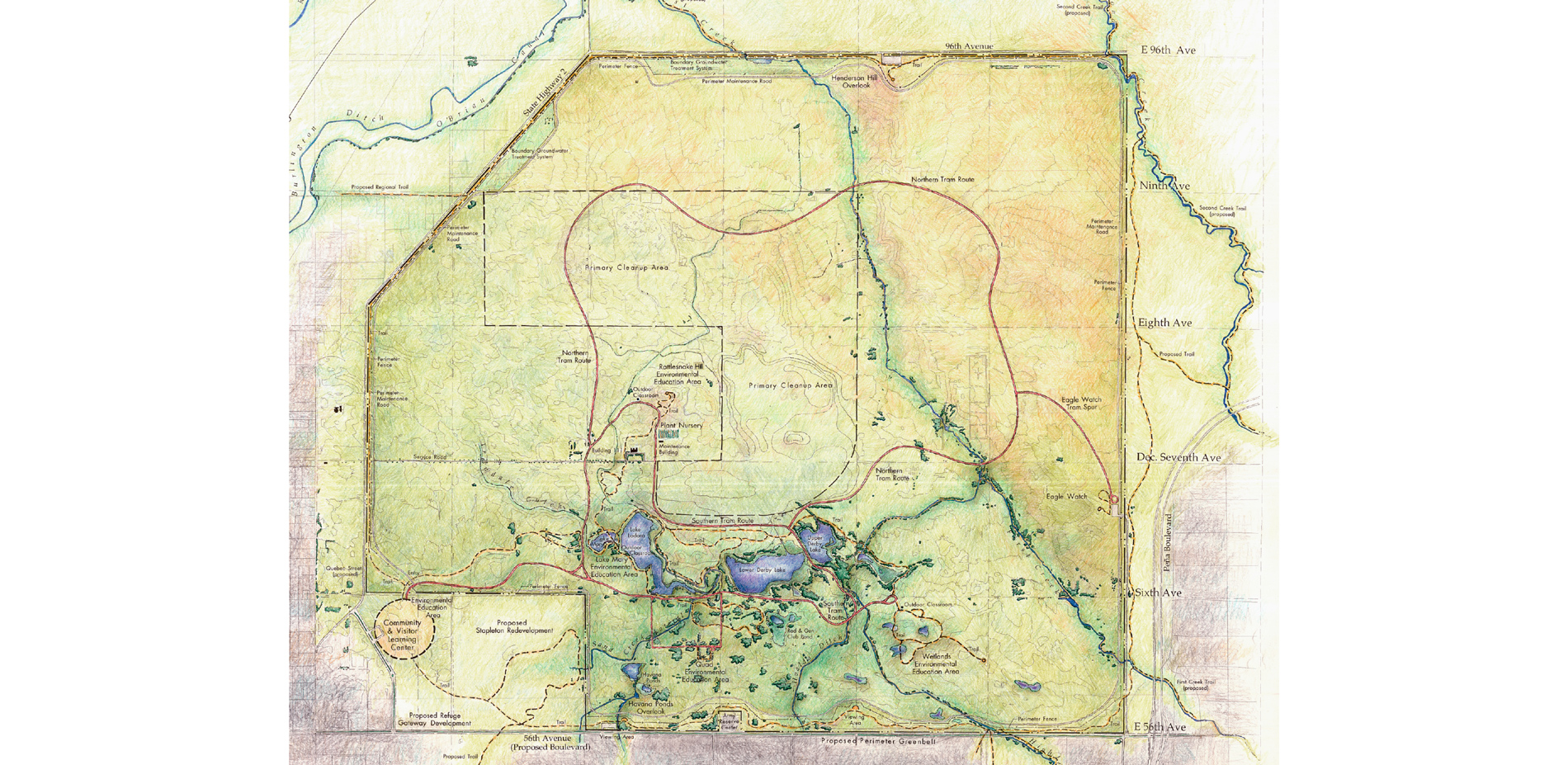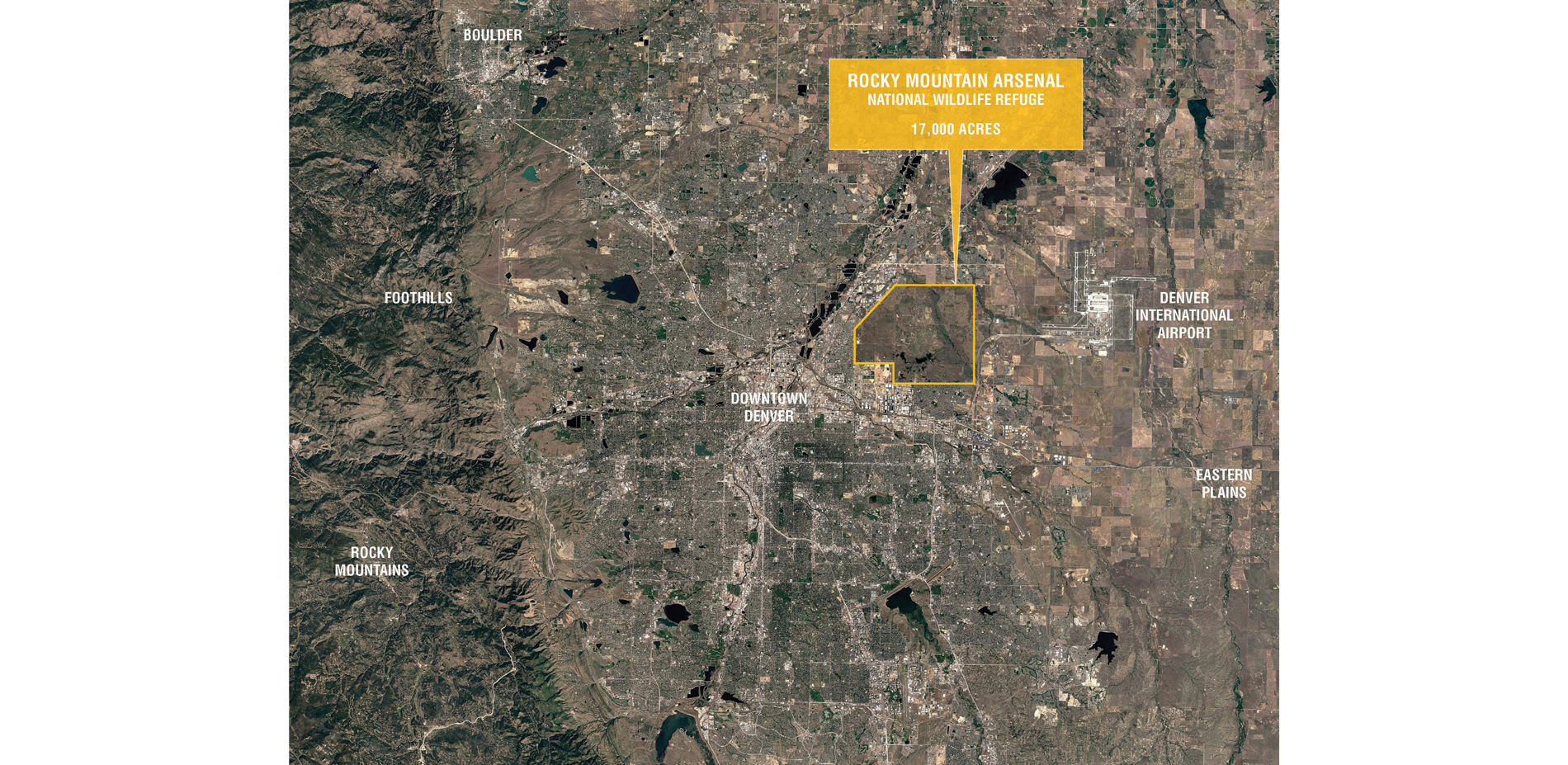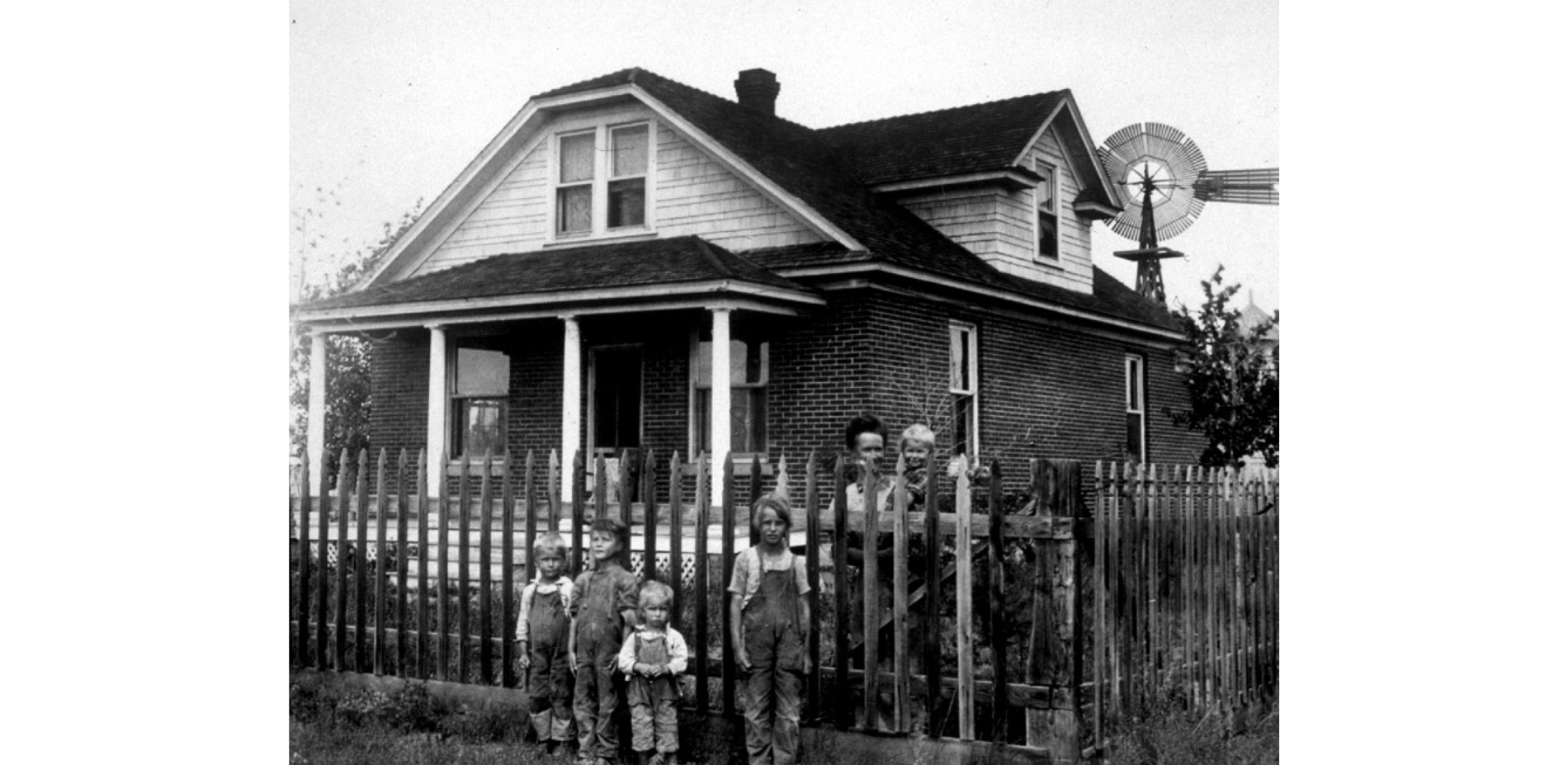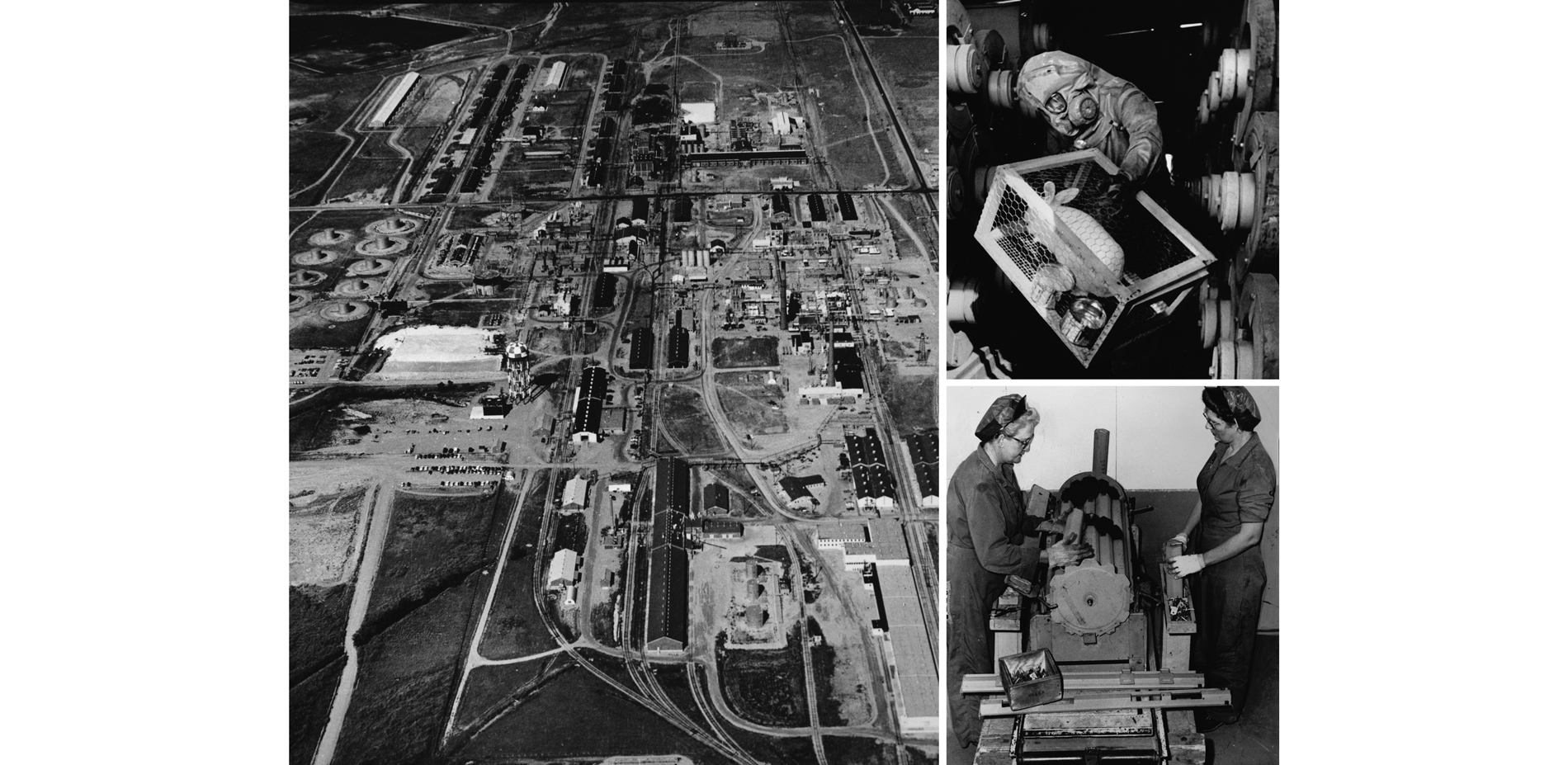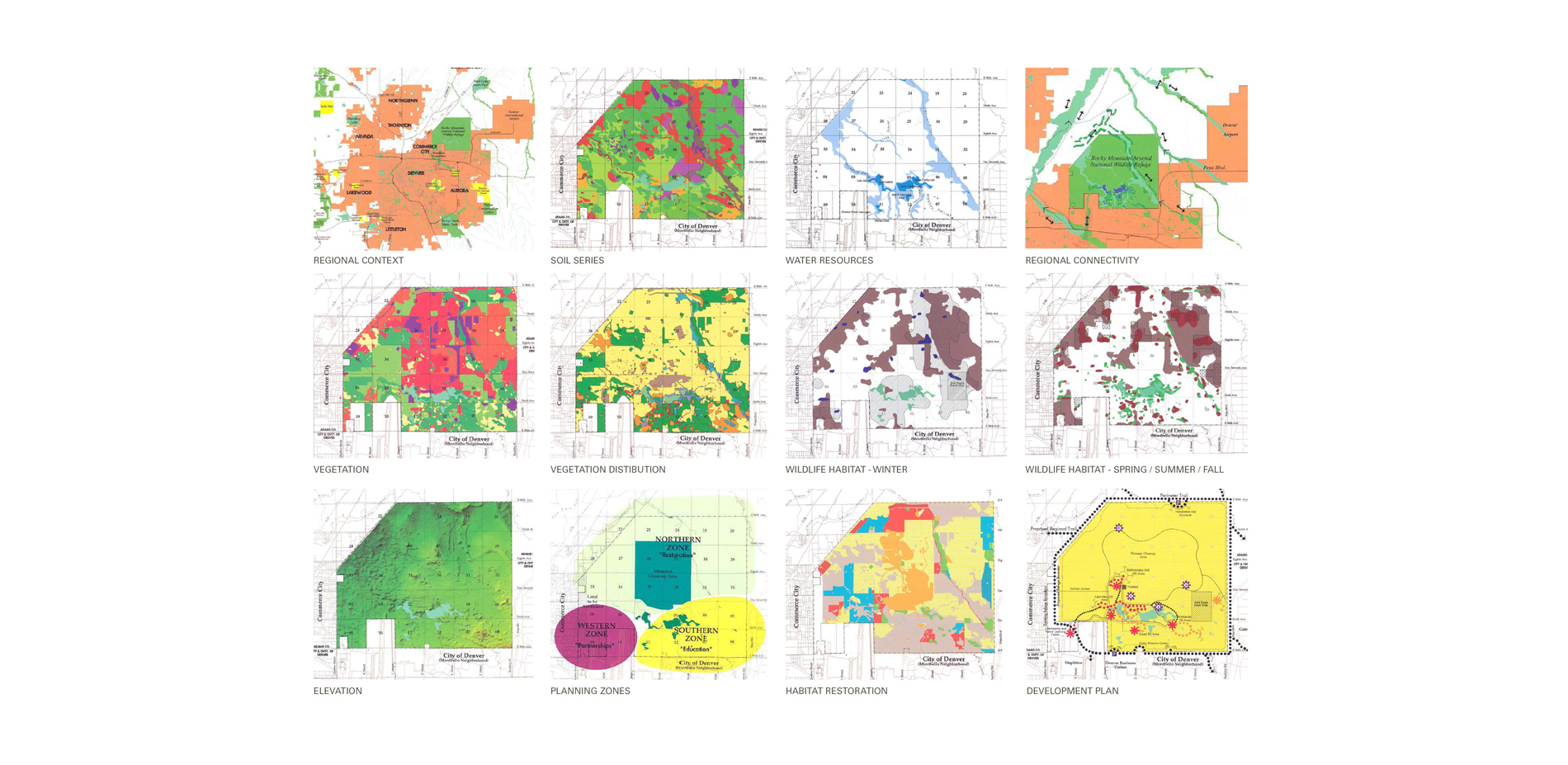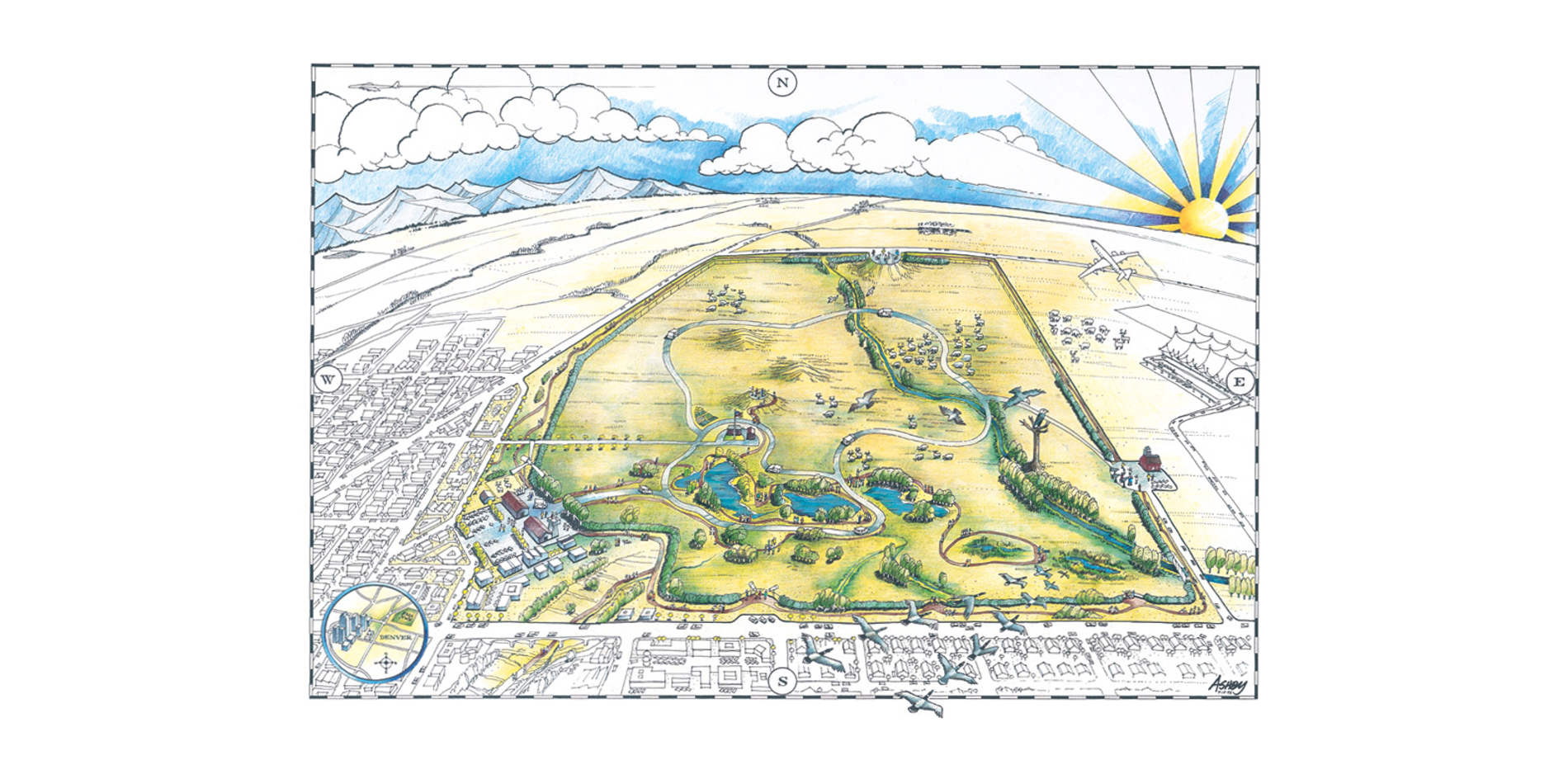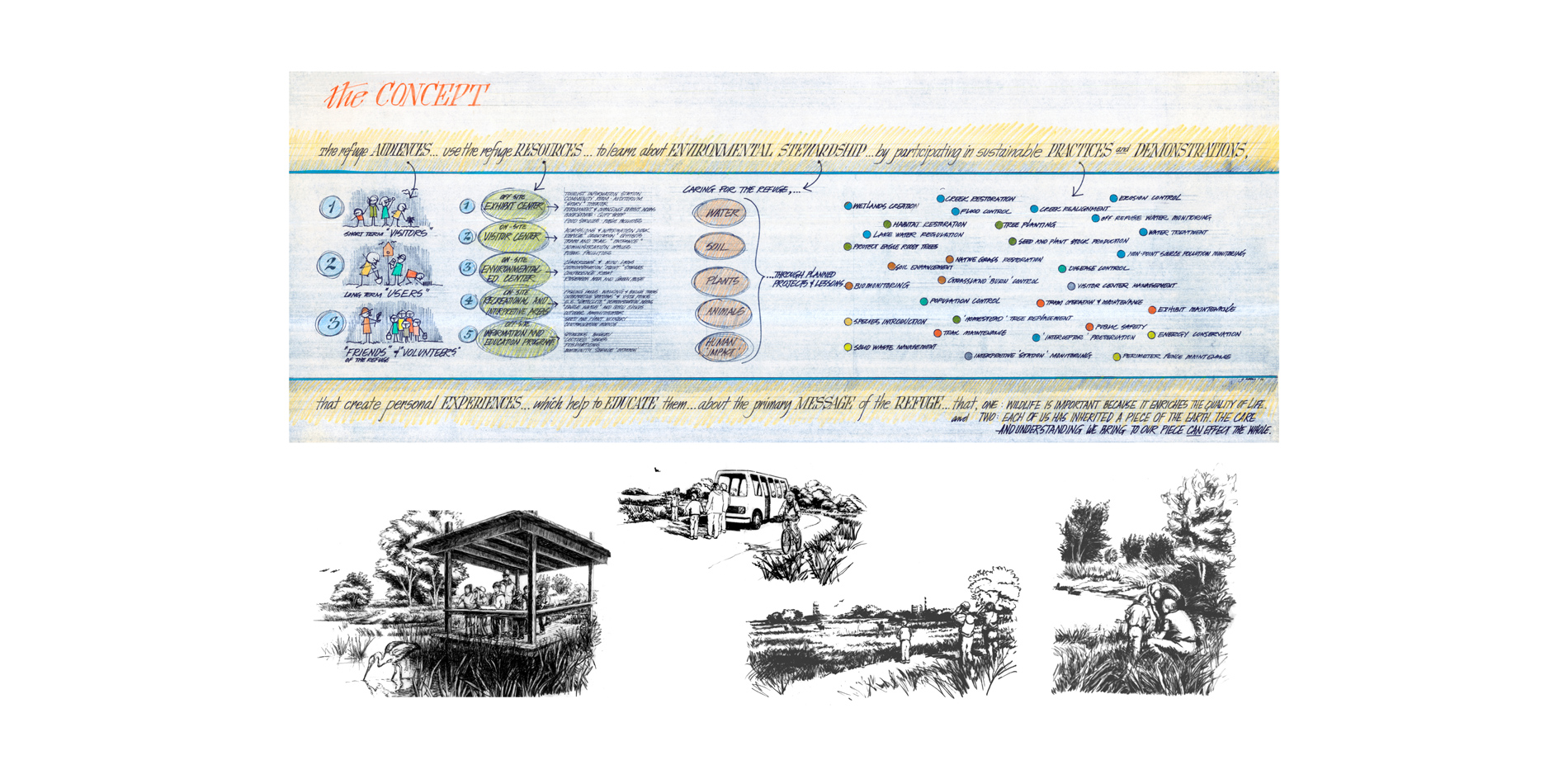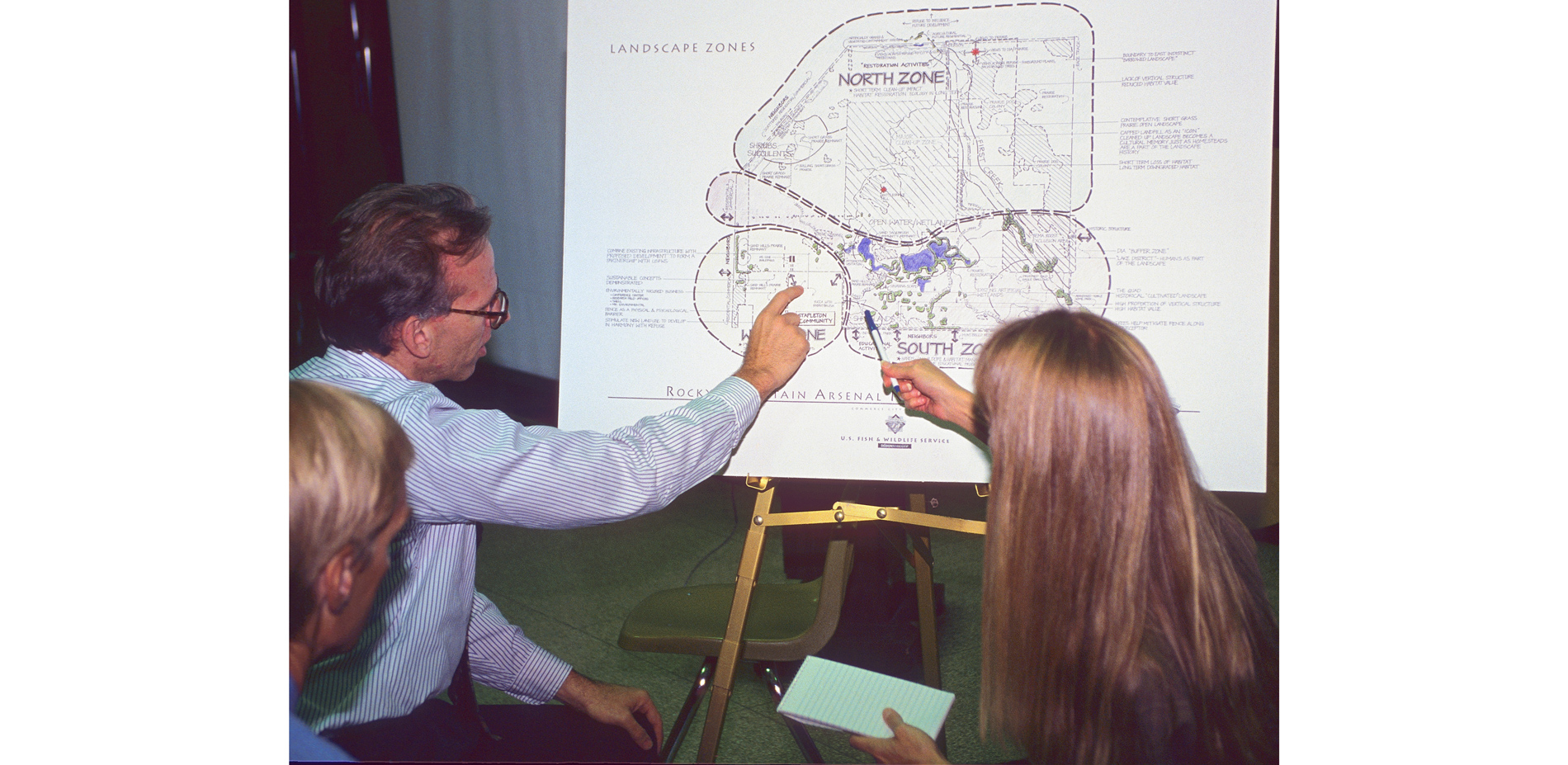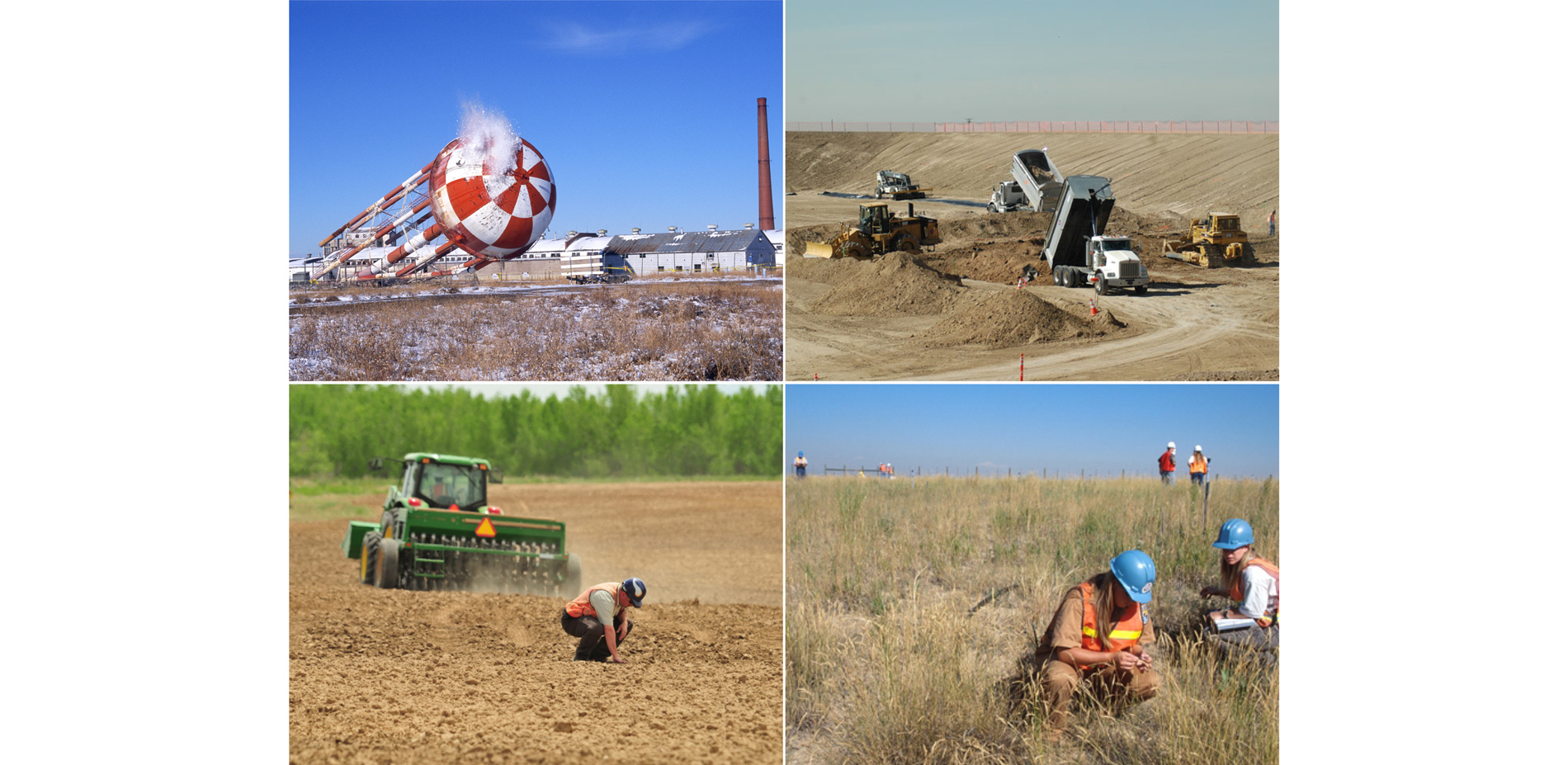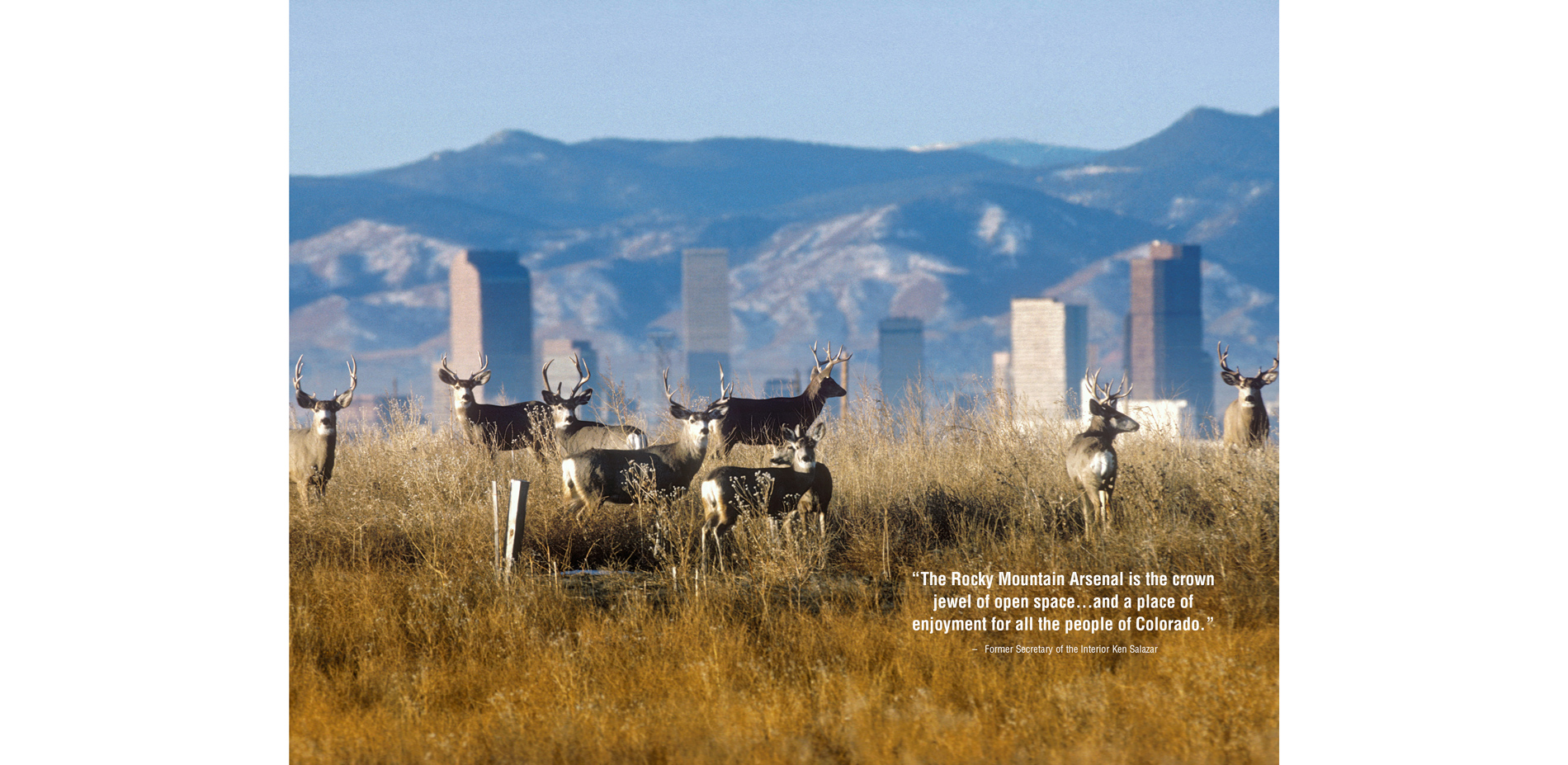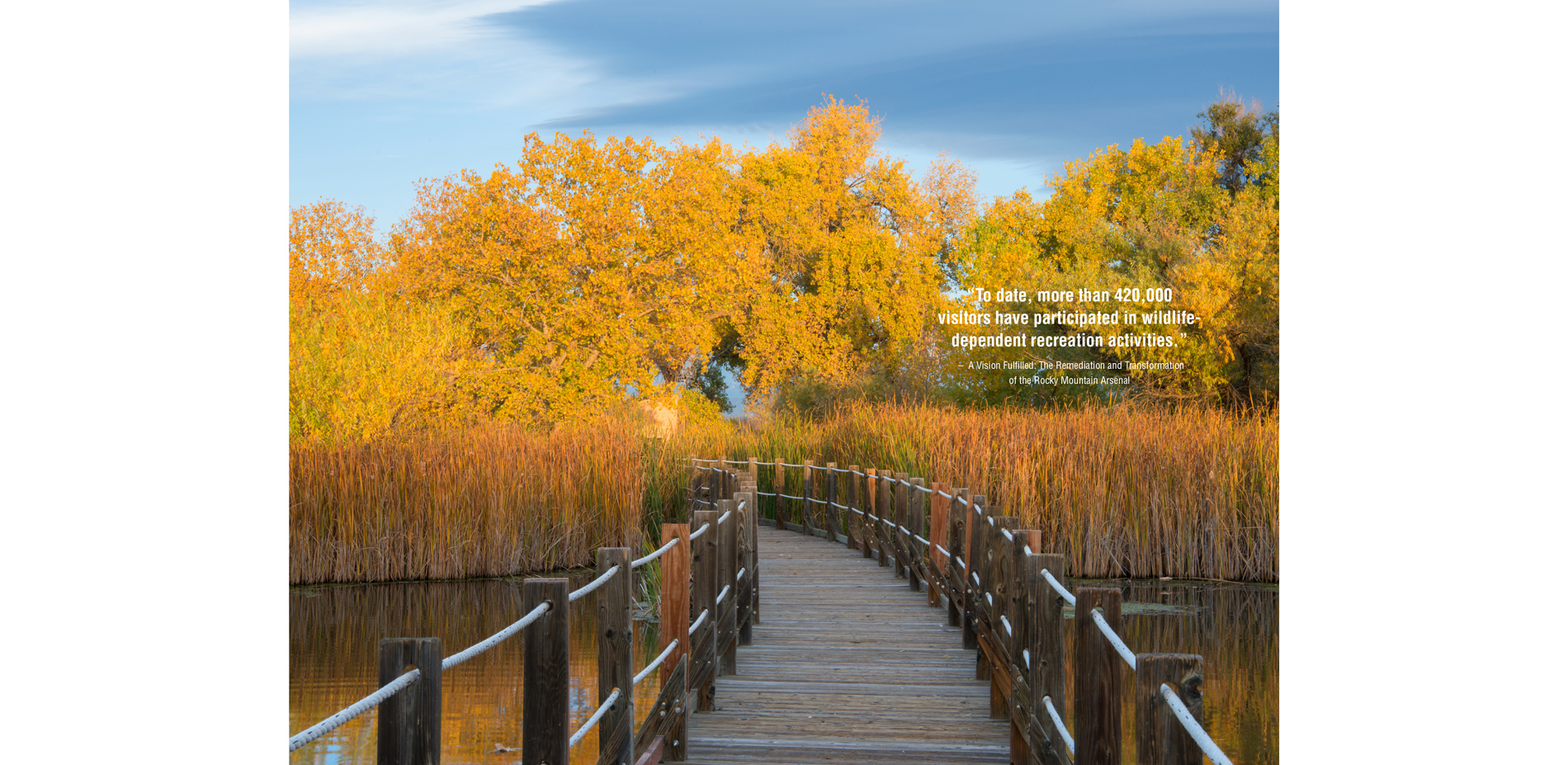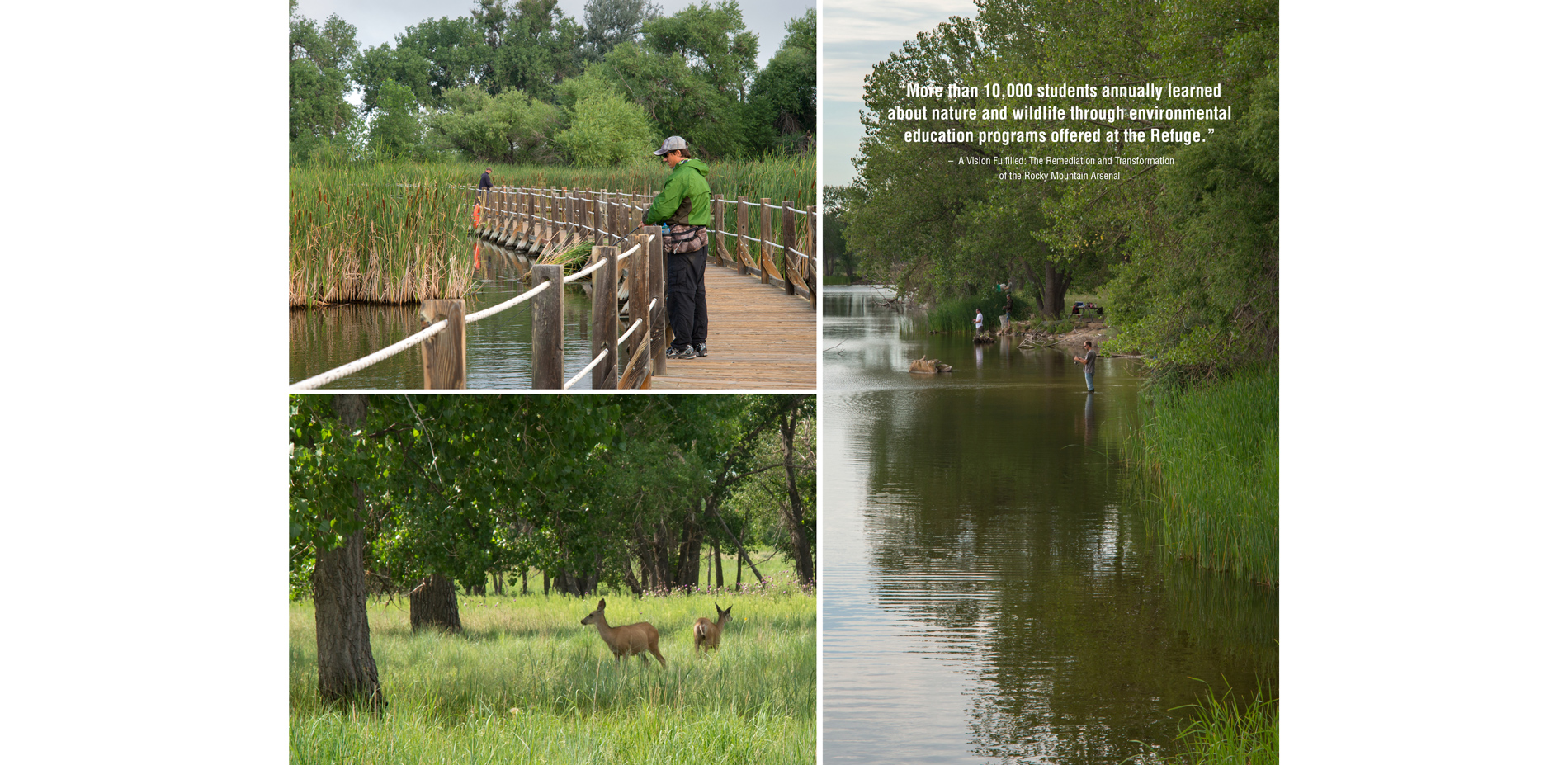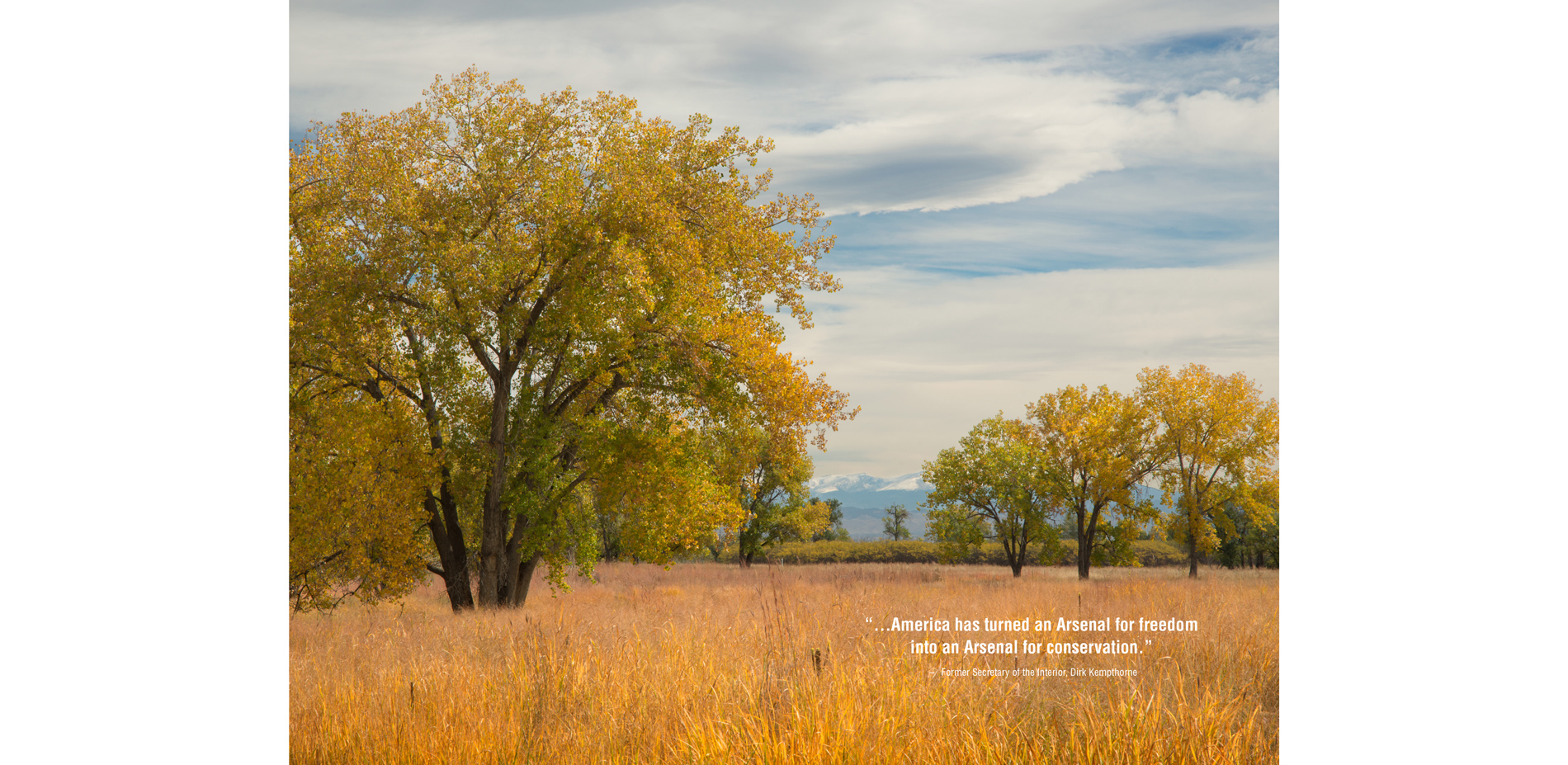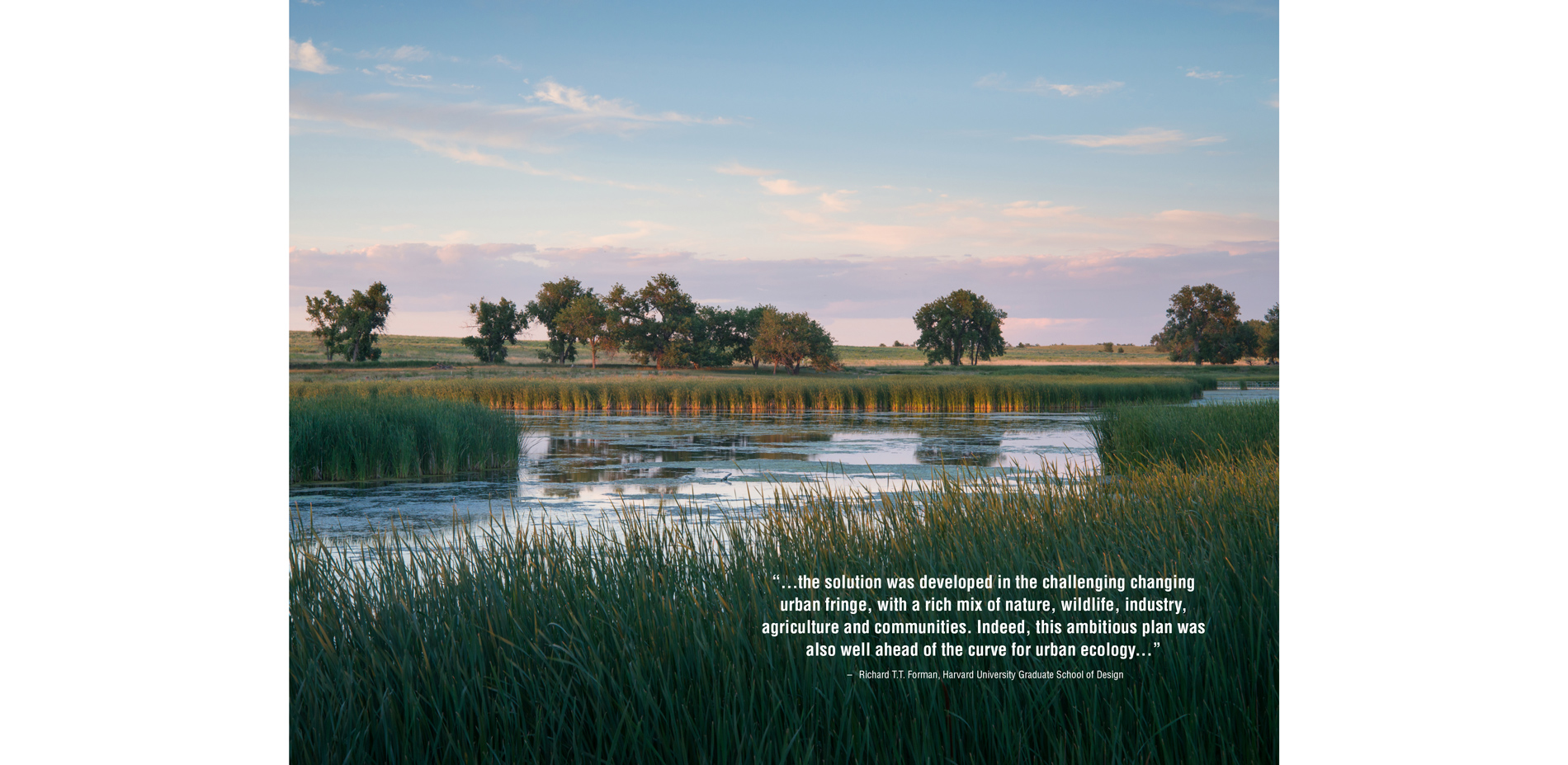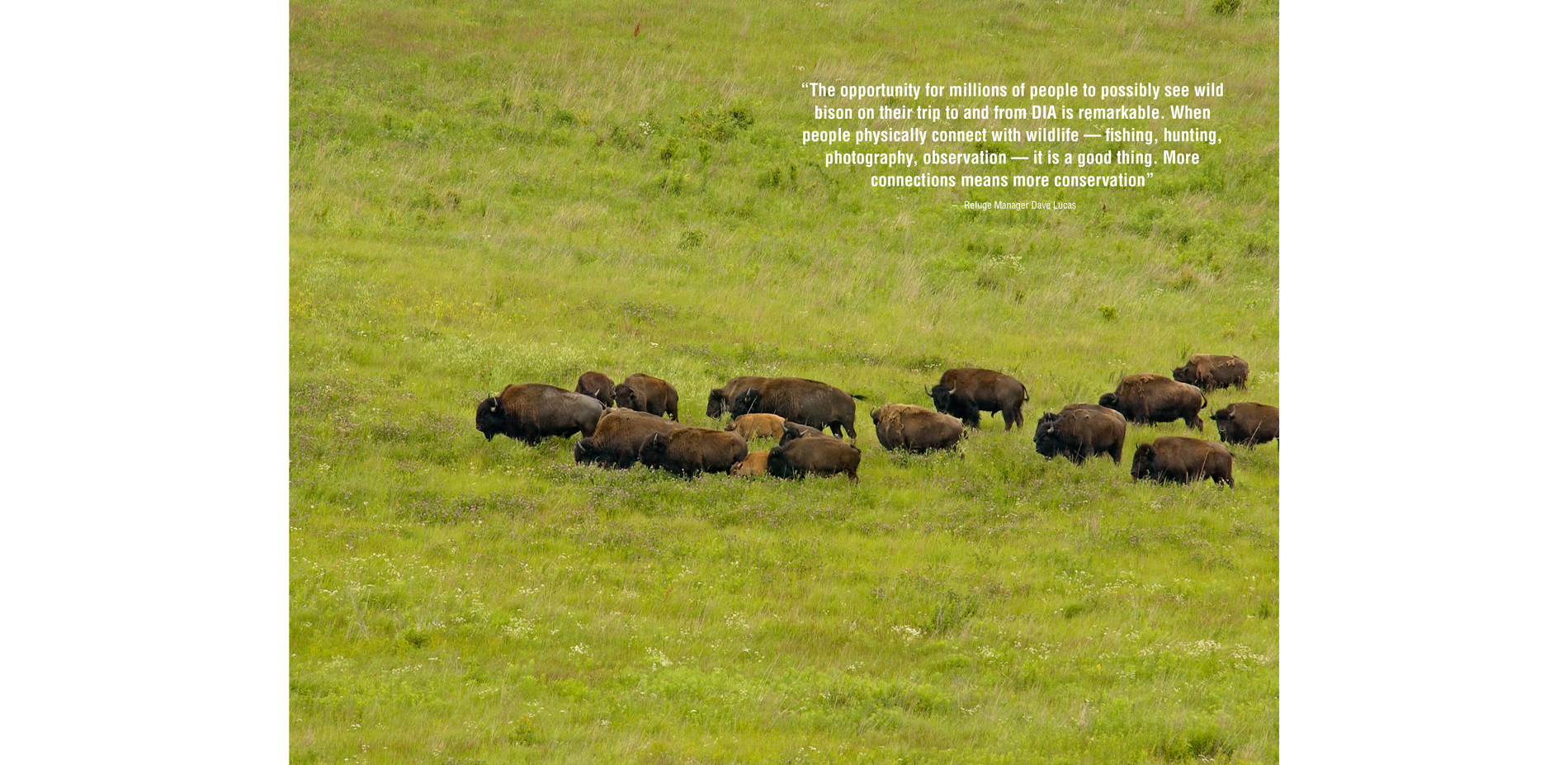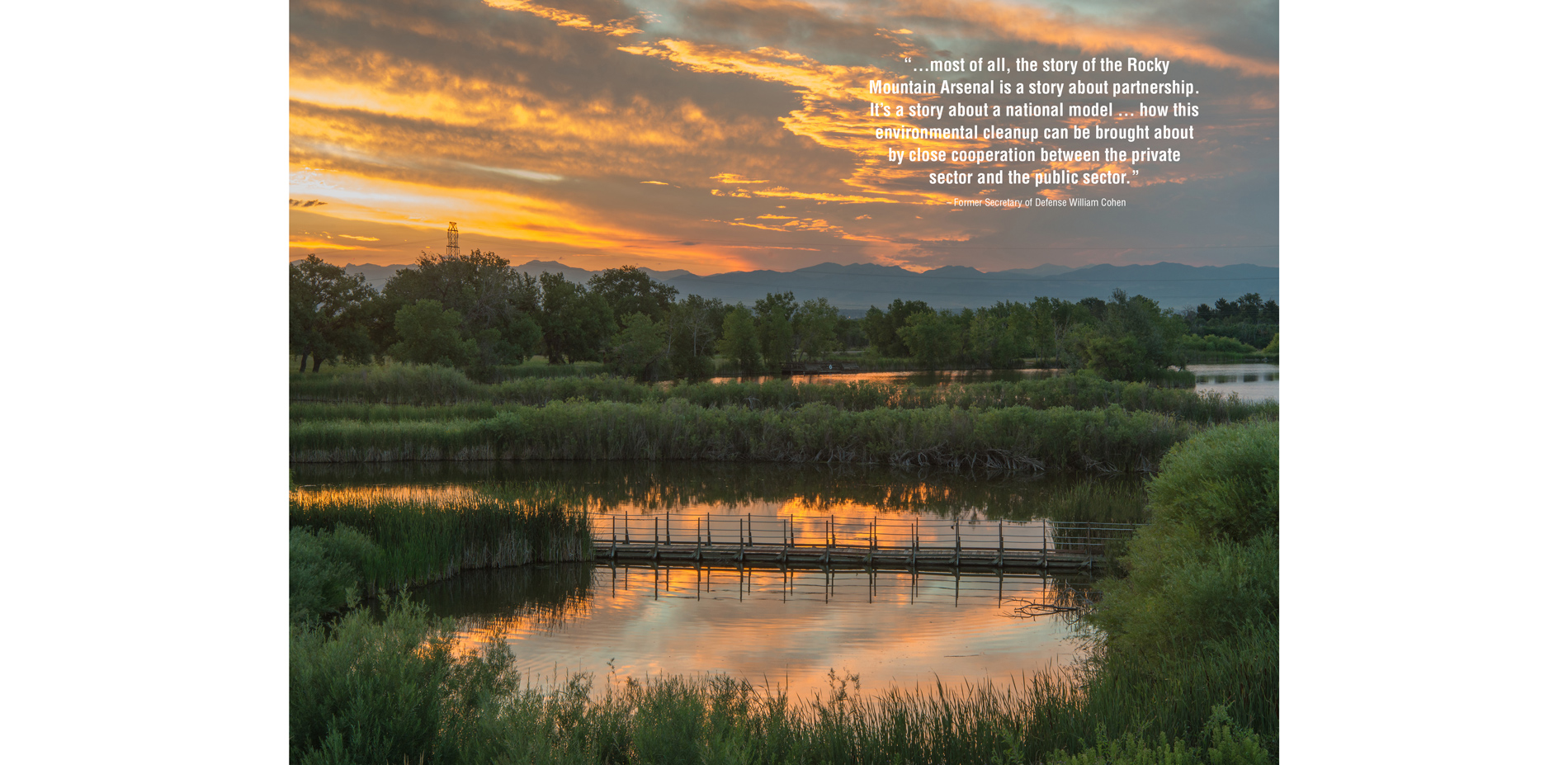From Weapons to Wildlife: The Rocky Mountain Arsenal National Wildlife Refuge Comprehensive Management Plan
THE LANDMARK AWARD
Commerce City, CO, USA | Design Workshop - Denver | Client: U.S. Fish and Wildlife Service, U.S. Army, United States Government, and Shell Oil Company
The process ratifies the value of remediation. This demonstrates that you can actually fix these places.
- 2018 Awards Jury
PROJECT CREDITS
Consultant Team
Refuge Planning + Project Management
- Design Workshop, Inc. – Denver, Colorado
- Paul Cawood Hellmund, ASLA – Project Director
- Mathew Evans – Project Manager
- Additional Staff
- Lee Ann Campbell
- Andrea Grant
- Brenda Herman
- Ginger Laser
- Linda Lee
- Joanna Jaszczak
- Katarzyna Molska
- Steve Mullen
- Greg Ochis
- Jane Shoplick
- Chris Sutterfield
- Kim Swanson
- Sue Swellenboch
- Sylvie Viola
- Marty Zeller
EIS Preparation + Biological Assessment
- ERO Resources Corporation – Denver, Colorado
- Richard Trenholme – Project Manager
- Additional Staff
- Mark Dehaven
- Steve Dougherty
- Steve Johnson
- Barbara Mattingly
- Anjie Saunders
Concept Designer
- Gordon Ashby – Inverness, California
Market Demand
- BBC Research & Consulting – Denver, Colorado
- Ford Frick – Director in Charge, Lucy Garrity
Conservation Biology
- Big River Associates – Ukiah, California
- Allen Cooperrider
Graphic Design
- CW&H Graphics – Denver, Colorado
- Carlie Barnhart
Traffic Analysis
- Felsburg Holt & Ullevig – Englewood, Colorado
- Arnie Ullevig, Dave Halton
Environmental Education
- Wendy Hanophy – Arvada, Colorado
- Ted Mills – Stillwater, Oklahoma
Architecture
- OZ Architecture – Denver, Colorado
- Jim Bershof, Rick Petersen
Project Participants
- U.S. Fish & Wildlife Service
- Rocky Mountain Arsenal National Wildlife Refuge
- Roy Rauch – Refuge Manager
- David Shaffer – Project Manager
- Laurie Shannon – Assistant Project Manager
- Pete Gove – Former Refuge Manager
- Additional Staff
- Alan Anderson
- Kathy Batha
- Coral Benzing
- Donguole Bockus
- Kathryn Cain
- Rory Carpenter
- Mary Carson
- Brian Devries
- Susan Echelberger, l. Ronel Finley
- Jane Griess
- Richard Grosz
- Lorri Harper
- Bruce Hastings
- Barbara Henry
- Catherine Henry
- Patrick Henry
- Melinda Hetrick
- Tom Jackson
- Sherry James
- David Jamiel
- Fred Krompetz
- Greg Langer
- Deborah Lerch
- J. Michael Lockhart
- Deborah Long
- Daniel Matiatos
- Richard McCutcheon
- Laurie Munroe
- Kathie Nessan
- Ruby Rodriguez
- Gerald Roehm
- Richard Roy
- David Seery
- Stephen Smith
- Bev Taylor
- Amy Thornburg
- Annette Ursini
- Sharon Vaughn
- Christine Vigil
U.S. Fish & Wildlife Service, Region 6
- John Cornely
- Sheri Fetherman
- Wayne King
- John Koerner
- Skip Ladd
- Adam Misztal
- Harvey Wittmier
National Fish and Wildlife Foundation
- Whitney Titly
- Nancy Stehle
U.S. Army
Shell Oil Company
Implementation + Management
- Rocky Mountain Arsenal Remediation Venture Office (RVO) was a unique teaming relationship among the U.S. Army, U.S. Fish and Wildlife Service (Service) and Shell Oil Co. The purpose of the RVO was to expedite the implementation of the 1996 Record of Decision and the transition to the Rocky Mountain Arsenal National Wildlife Refuge in a safe, timely and cost-effective manner that is fully protective of human health and the environment. The RVO was organized in October 1996 and has established a track record of success. The RVO was designed as a flexible, rather than a fixed, organization that provides direction and oversight of the Army’s Program Management Contractor (PMC), Tetra Tech EC, in the implementation of the 1996 Record of Decision. Tetra Tech EC provided program management, contract administration, remediation and restoration construction. (Sources: 1) A Vision Fulfilled: The Remediation and Transformation of the Rocky Mountain Arsenal, 2) Tetra Tech EC Website)
Assistance for the Landmark Award Submission
- Rocky Mountain Arsenal National Wildlife Refuge Complex
- U.S. Fish and Wildlife Service
- David Lucas, Toni Griffin and Cindy Souders
Rocky Mountain Arsenal Public Affairs
- Kevin Frisbie
- A Vision Fulfilled: The Remediation and Transformation of the Rocky Mountain Arsenal
PROJECT STATEMENT
The Rocky Mountain Arsenal National Wildlife Refuge Comprehensive Management Plan served a visionary purpose in the conversion of a 17,000-acre Superfund site into one of our nation's largest urban wildlife refuges. The catalyst – the Refuge Act of 1992 – set forth the challenge to maximize public use at levels compatible with the conservation and enhancement of wildlife habitat.
Addressing pressing land use issues of the early 21st century – conservation, habitat protection and management, pollution control, cleanup and reuse, public use, recreation, environmental education and sustainable development – the CMP conceptualized a pioneering approach to dynamic, novel ecosystems where restoration would harbor living ecologies while simultaneously providing recreational opportunities. Demonstrating the role landscape architecture may play in complex, contaminated lands, the CMP represented a model for how public and private partnerships may assist with the large-scale remediation of decommissioned military sites into public wildlife reserves.
"The Rocky Mountain Arsenal is the crown jewel of open space…and a place of enjoyment for all the people of Colorado." – Former Secretary of the Interior, Ken Salazar
PROJECT NARRATIVE
Located ten miles northeast of downtown Denver, the Rocky Mountain Arsenal National Wildlife Refuge is a storied landscape of cultural and ecological significance. For thousands of years, the Refuge consisted of a shortgrass prairie, indigenous to community of plants and animals which evolved on the high plains along Colorado's Front Range. Vast herds of American bison roamed freely, while prehistoric people followed the availability of foods. By the early 1800s, Native Americans hunted the terrain, and by the mid-1800s, settlers grazed cattle and raised crops. Building lakes, ditches and planted trees, thereby creating diverse wildlife habitat, settlers played a pivotal role in transforming the prairie landscape.
In 1942, in the wake of Pearl Harbor, the U.S. Army purchased nearly 20,000 acres – an area roughly the size of Manhattan – to construct the Arsenal for the purposes of producing biological and chemical weapons. After World War II, the Army leased the plant to private companies, who manufactured agricultural chemicals and pesticides. Cold War tensions reactivated the Arsenal, during which time sarin, a highly toxic nerve agent, was produced.
Although the Army and Shell used accepted waste disposal methods of the time, contamination of the soil, structures and groundwater still occurred. In 1962, environmentalist Rachel Carson's Silent Spring described possible effects of on-site contamination that had been apparent as early as 1954. In 1983, the EPA listed the Arsenal as a Superfund Cleanup site, identifying nearly 600 different chemicals.
Despite this fact, the relatively undisturbed perimeter zone provided food, shelter and free space for more than 330 species of wildlife. In 1986, bald eagles were discovered on the site. As landowners, politicians and others searched for a future use for the site, the wildlife discovery illustrated visible promise of the site's potential. In 1987, the U.S. Fish and Wildlife Service began managing the site, and five years later, Congress enacted the Rocky Mountain Arsenal National Wildlife Refuge Act.
PROCESS
The Act required the USFWS to develop a Comprehensive Management Plan (CMP). As the 'living document' drawn upon as the Refuge evolved, the CMP leveraged the significant investment to both clean up and restore the landscape for the present and to consider future uses on the site. The CMP formed the development template for all future Refuge activities, including integrating restoration work, with future visitor facilities, public use programs, research and wildlife and habitat management. The Act's most challenging aspect was the requirement to provide maximum fish- and wildlife-oriented public use at levels compatible with the conservation and enhancement of wildlife habitat.
Completed in 1995-1996, the CMP process entailed four broad phases – Inventory and Analysis, Program Development, Alternatives Analysis, and Preferred Plan Selection and Development – and challenged institutional and public perceptions of how to approach complex urban ecologies. Recognizing how peripheral development had impacted the Arsenal, the team shifted away from a concept which recreated the former shortgrass prairie, instead setting a precedent for creating a novel ecosystem — where living ecologies combined with cultural and recreational components – coexist.
Extensive workshops, focus group meetings and public meetings identified stakeholder concerns and goals while Program Development identified needs, analyzed use compatibility and assessed preliminary impacts. Of significance, the Plan included one of the most extensive community outreach programs of any Superfund site in the nation. The process then conceptualized a vision resulting in a series of alternatives which entailed scenario planning of varying intensities for public use. Alternatives were evaluated through public forum, and through feedback and the comments received, a preferred alternative became the physical plan found in the CMP. This plan incorporates a GIS analysis of the Refuge which suggested the degree of suitability for future Refuge development based on physical factors and wildlife use.
ZONE MANAGEMENT
Distinct patterns – some natural, some constructed – revealed past uses, suggested ecological functions and represented placement within regional ecologies. To preserve these relationships, a Zone Management Concept focused upon the principles of Partnership, Education, and Restoration.
Partnership: The Western Zone, located adjacent to metropolitan development, provided a logical community-oriented gateway. This zone included all major facilities – a visitor learning center, a campus of education, lab and research facilities, and other commercial and nonprofit businesses. The CMP outlined a cooperative "green industry" zone where partnerships formed with the USFWS would compound future funding.
Education: The Southern Zone, with its many lakes, ditches and related vegetation along existing roads, required little cleanup. Adjacent to established neighborhoods, this zone included educational venues along public use trails organized around existing Jeffersonian grid-based roads. The Plan outlined habitat for the existing wildlife and anticipated wildlife reintroductions, and integrated various forms of recreation.
Restoration: The Northern Zone required the highest levels of cleanup effort. Here, the plan intentionally called for a quieter, less frequented place, designed in a more organic manner. Limited access is provided on the zone's eastern edge to accommodate the Bald Eagle Watch.
The Public Use Plan targeted various potential user groups. Recreational and educational activities include wildlife watching, hiking, jogging, cycling, non-consumptive hunting, angling, photography and picnicking while volunteer opportunities include monitoring, seed collecting, planting and trash collecting.
IMPLEMENTATION
Implemented by the Remediation Venture Office from 1996-1999, Phase I entailed prairie restoration, building demolition, road demolition, remote information facilities, an outdoor classroom, an environmental education facility, signage, a southern tram route, a rattlesnake hill environmental educational area, a prairie nursery, and a wetlands trail and environmental education area. From 2000 to 2008, Phase II included the Refuge's major facilities. Phase III included the First Creek Restoration, the Northern Tram Route and the reintroduction of native wildlife species, including a herd of sixteen American Bison.
IMPACT
The CMP addressed a breadth of critical issues challenging Western land development and use in the 21st century – land conservation, wildlife and habitat protection and management, pollution control, cleanup and reuse, public use, including recreation, environmental interpretation and education, sustainable development, and public/private partnerships.
The results demonstrate sustained value to the visitors it educates, the community it supports, the wildlife it protects and the landscape architecture profession and practice. Since 1996, annual visitation has increased from 40,000 to more than 300,000 visitors in 2013. 420,000 of these visitors have participated in wildlife-dependent recreation activities. Habitat protection is in place for more than 330 animal species. Furthermore, since the clean-up began, Commerce City has also witnessed a renewal of development with 43,000 new households planned or constructed immediately north – the first housing developments planned in 40 years. Finally, the project demonstrates how the profession of landscape architecture may contribute to the vision and remediation of large-scale, complex, contaminated landscapes, pioneering the way for more recent transformations.
"The plan represents a creative early application of the principles of landscape ecology, first synthesized in 1986, including effective use of the rather new patch–corridor–matrix model. Furthermore, the solution was developed in the challenging changing urban fringe, with a rich mix of nature, wildlife, industry, agriculture and communities. Indeed, this ambitious plan was also well ahead of the curve for urban ecology, first synthesized in 2008." – Richard T.T. Forman, Harvard University Graduate School of Design.
"…most of all, the story of the Rocky Mountain Arsenal is a story about partnership. It's a story about a national model … how this environmental cleanup can be brought about by close cooperation between the private sector and the public sector." – Former Secretary of Defense William Cohen
"…today we recognize the transformation of a Superfund site… into an environmental, educational, and recreational treasure… an urban wildlife refuge blooms out of once contaminated land…" – Former EPA Administrator Stephen Johnson
